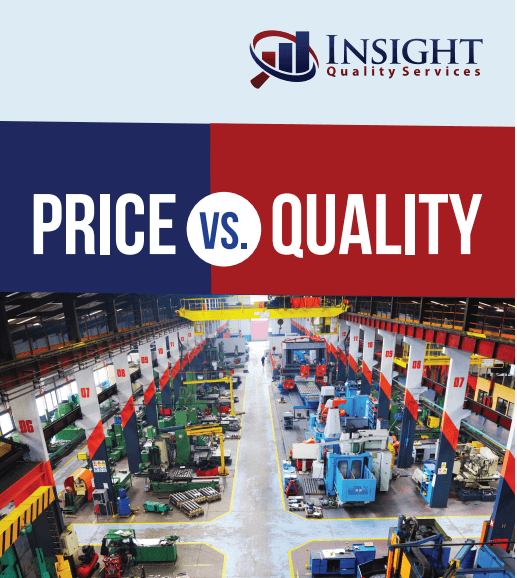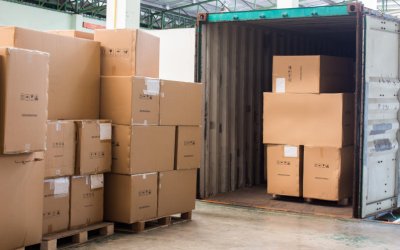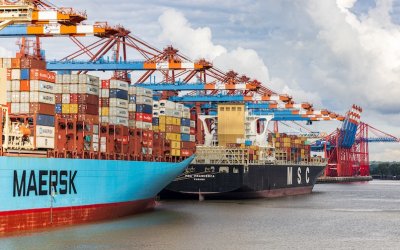As an importer, you may be familiar with some of the eleven Incoterms that play an essential role in international trade. The Incoterms, or International Commercial Terms, are a set of internationally-recognized rules around the global transportation and delivery of goods.
Dating back to 1936, they assign responsibility for risks, costs, and liability between a seller and a buyer involved in an international transaction. Incoterms are essential as they ensure that trade transactions run smoothly without any misunderstandings.
Recently, we talked about the difference between the FOB and CIF Incoterms. In this article, we will focus on another one of the most commonly used Incoterms, DDP. We’ll discuss what it is and how it compares to DDU, another similar Incoterm.
Table of Contents
What is DDP Shipping?

DDP, or Delivered Duty Paid shipping, is an arrangement where the seller assumes all the costs, risks, and liabilities of transporting goods to the buyer. The seller is responsible for shipping costs, customs clearance, import and export duties, taxes, and any related paperwork.
DDP terms, therefore, place the highest responsibility on the seller, and their responsibility ends when the goods arrive at the destination that you, as the buyer, have specified. After arriving at the destination, the risk passes from the seller to the buyer.
What are the Seller’s Responsibilities Under DDP?
DDP Incoterms place responsibility for the goods on the seller from the point of purchase to delivery. The seller must package the goods, arrange for the necessary clearance documentation, organize transportation and pay for customs clearance at the destination.
The exporter must be prepared to deal with any issues at any stage of the shipping process and the associated costs. For instance, delays at customs clearance may incur demurrages, or the cargo may get lost or damaged in transit. All these instances add financial responsibility to the exporter.
What are Your Responsibilities Under DDP as the Buyer?
As the buyer, your responsibility starts upon the receipt of the goods at the specified destination. Depending on local regulations, there may be fees associated with the unloading process, which become your responsibility. Similarly, you are responsible for insurance and further transport from the point of collection.
What are the Advantages and Disadvantages of using DDP?

As a buyer, you may be wondering what the benefits and drawbacks of using DDP are. We’ve outlined them below:
Advantages
- As the buyer, you are not responsible for any of the shipping logistics or their associated costs.
- The seller takes on the landed costs, which include shipping, clearing, and delivery. Even if something happens on the way to the destination, the seller incurs all the extra expenses.
- The DDP process is stress-free for the importer. Once you order the goods, all you have to do is wait for them to arrive.
- An established seller with existing logistics partnerships will give you a guaranteed delivery date.
Disadvantages
- You relinquish control of the goods to the seller, which means you cannot intervene if there are problems during shipping.
- Customs regulations can be complicated, and any mistakes in documentation can lead to long delays. In a worst-case scenario, the seller may count their losses and abandon the goods, leaving you short of goods, time, and money.
- The seller might use the cheapest logistics options available, which could lead to delays, cargo damage, or loss.
- The seller is likely to give a quote factoring in any unforeseen costs that they may incur, which drives the price higher.
DDP Vs. DDU: What is the Difference?
Another common Incoterm that you are likely to come across is DDU. DDU stands for ‘delivered duty unpaid.’ Under this Incoterm, the seller has the responsibility of transporting the goods to your designated destination. They assume any risks that might occur during shipping.
Once the goods arrive at the designated place, their responsibility shifts to you, and you pay for customs clearance, inspection costs, import duties, and taxes. You are also responsible for any offloading costs and onward transportation from the port of arrival.
The most significant difference between DDP and DDU is that in DDP, the seller assumes the highest responsibility for the goods. They pay for shipping, import and export logistics, customs clearance, import duty, and taxes.
The seller’s responsibility ends when the goods arrive at the buyer’s designated destination. In DDU, the seller is responsible for transporting the goods while the buyer pays for import taxes and other related charges.
It is important to note that the International Chamber of Commerce replaced DDU with DAP (delivered at place) in 2010. You are, however, still likely to encounter the term DDU in some sales contracts.
Managing Your Risk as an Importer

As an importer, DDP may be an ‘easier’ way of importing because the bulk of the responsibility lies with the seller. You also don’t need to handle any logistics beyond arranging for your goods’ unloading and transportation.
On the flip side, however, DDP requires you to relinquish control of the goods to the seller until they arrive at your destination. Any issues with customs clearance can cause expensive delays for you.
The seller will give you a landed price, allowing for better planning, but they will also factor the risk of unexpected events into the cost. These events may or may not occur, but they will push the price you pay for the goods higher.
Aside from using the appropriate Incoterms, product quality is also a significant concern for importers. They say that you get what you pay for, and this is true for international trade.
By balancing price and quality, you ensure that you get exactly what your customers want. To learn more about achieving this balance and avoiding low-quality products, we recommend reading our ebook, Price vs. Quality.
Price vs. Quality: What You Need to Know
When you’re making products to sell in the marketplace, you have to consider the tradeoffs between price and quality. Sometimes, producing better quality products can lead to paying a higher price for manufacturing. Download our free white paper, Price vs. Quality, to learn how to produce great quality while keeping your costs low.





0 Comments